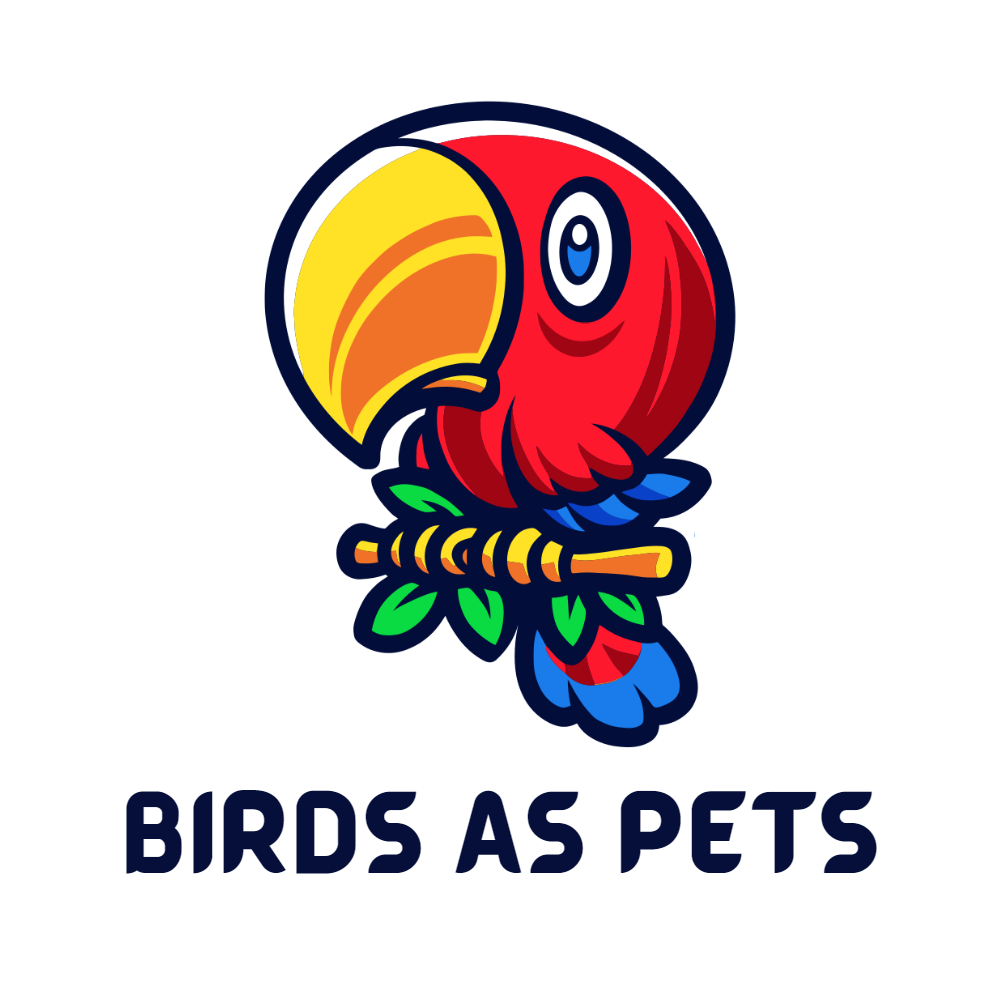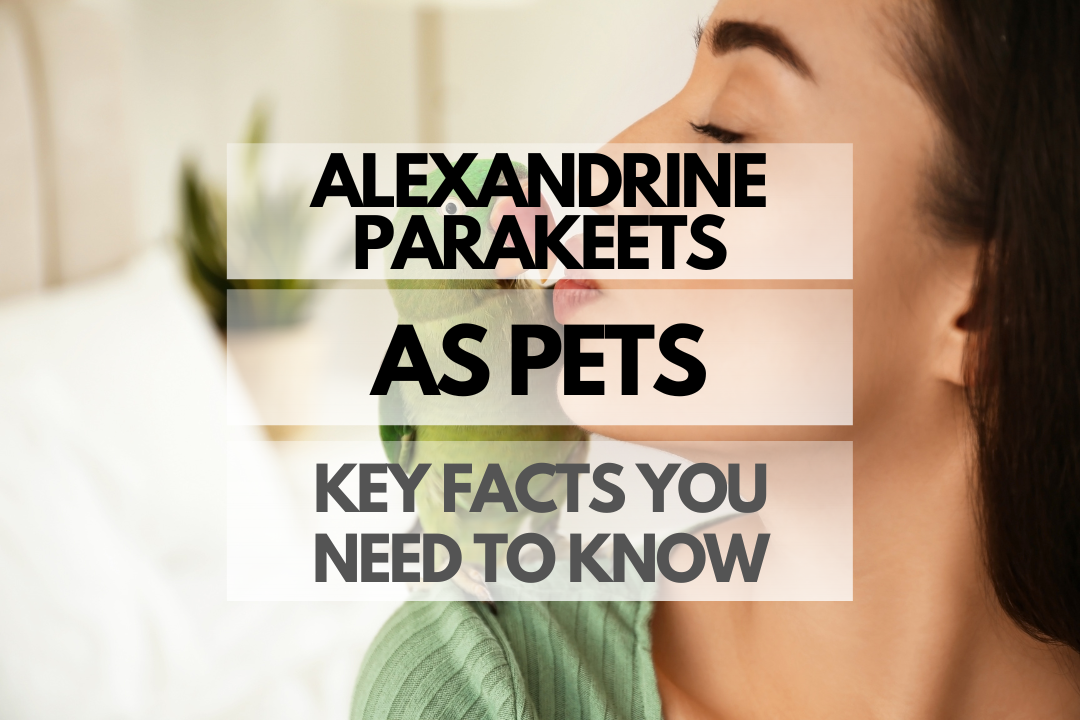If you’re considering adding an Alexandrine Parakeet to your family, you’re in for a treat! These intelligent, social, and beautiful birds make wonderful pets for the right owner. In this article, we’ll cover everything you need to know about keeping Alexandrine Parakeets as pets, from their natural habitat and lifespan to care requirements and costs.
Quick Reference Table: Alexandrine Parakeet Facts
| Size | 22-24 inches (56-61 cm) in length |
|---|---|
| Weight | 8.8-10.6 oz (250-300 g) |
| Lifespan | 20-30 years |
| Temperament | Intelligent, social, affectionate, can be noisy |
| Colors | Primarily green with blue and red markings |
| Native Range | India, Sri Lanka, and Southeast Asia |
Where Do Wild Alexandrine Parakeets Live?
In the wild, Alexandrine Parakeets can be found across India, Sri Lanka, and Southeast Asia. They inhabit woodlands, mangrove forests, and cultivated areas, often living near human settlements. These birds are highly adaptable and are known to thrive in both urban and rural environments.
Alexandrine Parakeet Lifespan: How Long Do They Live as Pets?
Alexandrine Parakeets can live for 20-30 years in captivity with proper care. This long lifespan means that owning an Alexandrine Parakeet is a significant time commitment. To ensure your bird’s health and happiness, provide a balanced diet, ample mental stimulation, and regular veterinary check-ups.
Are Alexandrine Parakeets Good Pets?
Yes, Alexandrine Parakeets can make wonderful pets for the right owner. They are intelligent, social, and affectionate birds, known for their ability to form strong bonds with their human caregivers. They are also beautiful and engaging, with striking colors and an energetic nature. However, they can be quite noisy and may not be the best fit for those living in close quarters or with noise-sensitive neighbors.
Are Alexandrine Parakeets as Pets Good for Beginners?
While Alexandrine Parakeets are not the most challenging birds to care for, they may not be the best choice for inexperienced bird owners. Their size, noise level, and need for regular social interaction and mental stimulation can be demanding for someone new to bird care. It’s important to do thorough research and consider your own experience and lifestyle before bringing an Alexandrine Parakeet into your home.
Are Alexandrine Parakeets Easy to Care For?
Alexandrine Parakeets are not overly difficult to care for, but they do require some specific care and attention. They need a large cage, a balanced diet, regular social interaction, and mental stimulation to thrive. Additionally, they can be prone to certain health issues, so regular veterinary check-ups are essential.
Alexandrine Parakeet Pros and Cons
| Pros | Cons |
|---|---|
| Intelligent and trainable | Can be noisy |
| Social and affectionate | Require a large cage |
| Beautiful appearance | Long lifespan (consider the time commitment) |
| Adaptable to various environments | May not be suitable for inexperienced bird owners |
Alexandrine Parakeet Price and Costs
The initial cost of an Alexandrine Parakeet can range from $300 to $600, depending on factors like age, color, and breeder reputation. In addition to the cost of the bird, you’ll need to invest in a large cage, toys, perches, and food dishes. Ongoing expenses include food, veterinary care, and cage maintenance supplies. Be prepared to budget for these costs to ensure your Alexandrine Parakeet’s well-being.
Where to Buy Alexandrine Parakeets
When looking to purchase an Alexandrine Parakeet, consider reputable breeders, avian specialty stores, or bird rescues and adoption centers. It’s essential to choose a healthy, well-socialized bird to ensure a positive experience for both you and the parakeet. Always ask for a health guarantee and do your research on the seller’s reputation before making a decision.
Caring for Alexandrine Parakeets
Alexandrine Parakeet Food
A balanced diet is crucial for your Alexandrine Parakeet’s health. Provide a high-quality pellet diet supplemented with fresh fruits, vegetables, and occasional treats like nuts and seeds. Avoid avocados, chocolate, and foods high in salt and sugar, as these can be harmful to your bird. Make sure fresh water is always available.
Health and Common Issues
Alexandrine Parakeets are relatively hardy birds, but they can be susceptible to certain health issues. Some common problems include feather plucking, obesity, respiratory issues, and bacterial or fungal infections. Maintain a clean living environment, provide a balanced diet, and ensure your bird gets regular veterinary check-ups to minimize these risks.
Signs of Healthy Alexandrine Parakeets
| Healthy | Sick |
|---|---|
| Alert and active | Lethargic or unresponsive |
| Bright, clear eyes | Discharge, swelling, or cloudiness in the eyes |
| Smooth, well-groomed feathers | Ruffled, dirty, or plucked feathers |
| Regular appetite | Loss of appetite or weight loss |
| Normal droppings | Diarrhea, discolored, or unusual droppings |
Alexandrine Parakeet Pet Insurance
Just like any other pet, Alexandrine Parakeets can benefit from pet insurance. This can help cover unexpected veterinary costs in case of illness or injury. There are specialized bird insurance policies available, so be sure to research and find the right plan for your Alexandrine Parakeet.
Personality and Behavior
Alexandrine Parakeets are known for their intelligence, curiosity, and affectionate nature. They love to interact with their human caretakers and can be quite playful. These birds are also independent and can entertain themselves for short periods when provided with toys and mental stimulation. Keep in mind that they can be strong-willed and sometimes territorial, so it’s essential to establish gentle boundaries and provide consistent training from a young age.
Are Alexandrine Parakeets Social?
Yes, Alexandrine Parakeets are social creatures that thrive on interaction with their human family and, in some cases, other birds. They form strong bonds with their caretakers and enjoy spending time with them. Make sure to provide your Alexandrine Parakeet with regular socialization and interaction to ensure their emotional well-being.
Speech and Noise of Alexandrine Parakeets
Alexandrine Parakeets are known for their ability to mimic speech and sounds. With patience and practice, they can learn to say words and phrases. However, they are also quite noisy birds, known for their loud squawks and calls. Be prepared for a vocal pet and consider your living situation before bringing an Alexandrine Parakeet into your home.
Similar Species to Alexandrine Parakeets
There are several parakeet species that share similarities with Alexandrine Parakeets, including:
- Indian Ringneck Parakeets
- Rose-ringed Parakeets
- Derbyan Parakeets
- Plum-headed Parakeets
- Moustached Parakeets
While each species has its unique traits, they all share similar care requirements and characteristics, making them worth considering if you’re interested in Alexandrine Parakeets.
Can Alexandrine Parakeets Live With Other Pets and Birds?
Alexandrine Parakeets can potentially coexist with other pets and birds, but this depends on the individual personalities and compatibility of the animals involved. It’s essential to introduce new pets gradually and monitor their interactions closely to ensure a harmonious living situation. Be prepared to separate them if needed and provide each pet with their own space and resources.
Are Alexandrine Parakeets Legal to Have as Pets?
In most places, Alexandrine Parakeets are legal to keep as pets. However, local laws and regulations may vary, so it’s essential to check with your local authorities before bringing an Alexandrine Parakeet into your home. Some regions may require permits or have specific restrictions in place.
Additional Resources
- Alexandrine Parakeet Lovers Facebook Group
- r/parrots on Reddit
- Avian Avenue Bird Forums
- Parrots: Handfeeding and Nursery Management by Howard Voren and Rick Jordan
FAQ for Alexandrine Parakeets as Pets
Do Alexandrine Parakeets talk?
Yes, Alexandrine Parakeets can learn to talk and mimic sounds with practice and patience. However, their speech may not be as clear as other talking parrot species.
Are Alexandrine Parakeets suitable for families with young kids?
Alexandrine Parakeets can be suitable for families with young kids, but it’s essential to teach children how to interact with the bird gently and respectfully. Also, keep in mind that these parakeets can be noisy, which may not be ideal for all families.
Can Alexandrine Parakeets be trained?
Yes, Alexandrine Parakeets are intelligent and can be trained to perform tricks, talk, and step-up onto your hand. Consistency, patience, andpositive reinforcement are key to successful training.
How do I know what gender Alexandrine Parakeets are?
Adult male Alexandrine Parakeets have a black ring around their necks that females do not. Juveniles can be difficult to sex visually, but DNA testing can be done to determine the gender accurately.
What is the lifespan of an Alexandrine Parakeet?
Alexandrine Parakeets can live for 20 to 30 years or more if given proper care, a balanced diet, and a healthy living environment. Regular vet check-ups are also essential for maintaining their health.
What should I feed my Alexandrine Parakeet?
A balanced diet for an Alexandrine Parakeet should include high-quality pellets, fresh fruits, vegetables, and a limited amount of seeds and nuts. Avoid feeding them avocado, chocolate, and certain high-fat or high-sugar treats, as these can be harmful to their health.
How big of a cage does an Alexandrine Parakeet need?
Alexandrine Parakeets need a spacious cage that allows them to stretch their wings and move around comfortably. The minimum recommended cage size is 36 inches wide, 24 inches deep, and 48 inches tall. The cage should also have horizontal bars for climbing and ample perches and toys for enrichment.

